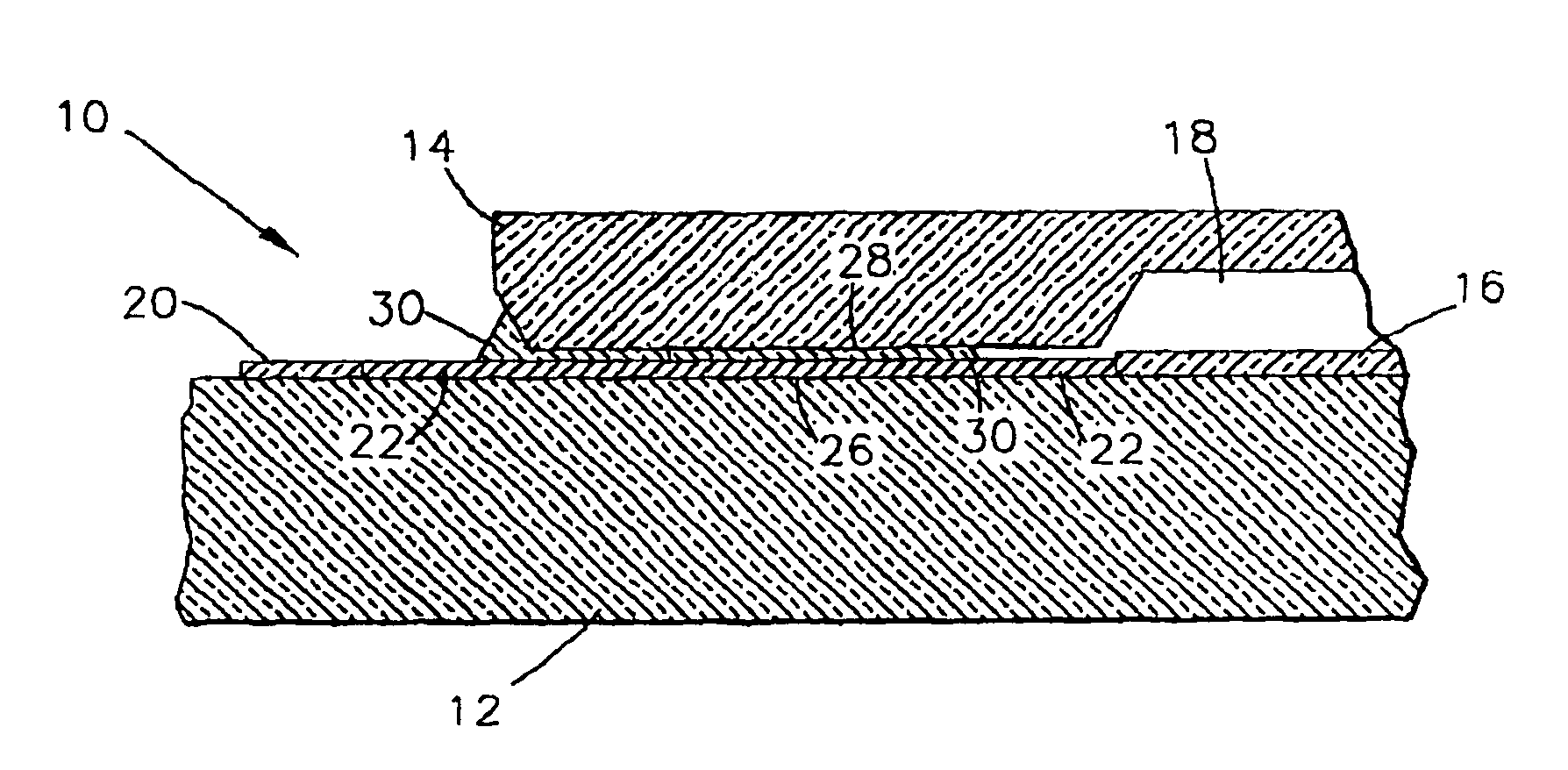Glass frit bond and process therefor
a technology of glass frit and bonding technology, applied in the field of glass frit compositions, can solve the problems of glass susceptible to moisture attack, inability to produce vacuum seals, and incompatible or less than ideal bonding techniques for certain applications
- Summary
- Abstract
- Description
- Claims
- Application Information
AI Technical Summary
Benefits of technology
Problems solved by technology
Method used
Image
Examples
Embodiment Construction
[0017]FIG. 1 represents a portion of a MEMS device package 10 formed by glass frit bonding a device wafer 12 to a capping wafer 14, such that a micromachined structure 16 (schematically represented in FIG. 2) is enclosed within a cavity 18 between the wafers 12 and 14. The device wafer 12 is typically formed of a semiconductor material such as silicon, preferably monocrystallographic silicon, though it is foreseeable that other materials could be used. The capping wafer 14 may be formed of glass, ceramic, or a semiconducting material. The micromachined structure 16 can be of any desired type, such as a proof mass, resonating structure, diaphragm or cantilever that relies on capacitive, piezoresistive and piezoelectric sensing elements to sense acceleration, motion, pressure, etc., all of which are known in the art.
[0018]As is conventional, the micromachined structure 16 is electrically interconnected to metal bond pads 20 on the device wafer 12 by conductive runners 22, often in the...
PUM
| Property | Measurement | Unit |
|---|---|---|
| softening point | aaaaa | aaaaa |
| temperature | aaaaa | aaaaa |
| volume | aaaaa | aaaaa |
Abstract
Description
Claims
Application Information
 Login to View More
Login to View More - R&D
- Intellectual Property
- Life Sciences
- Materials
- Tech Scout
- Unparalleled Data Quality
- Higher Quality Content
- 60% Fewer Hallucinations
Browse by: Latest US Patents, China's latest patents, Technical Efficacy Thesaurus, Application Domain, Technology Topic, Popular Technical Reports.
© 2025 PatSnap. All rights reserved.Legal|Privacy policy|Modern Slavery Act Transparency Statement|Sitemap|About US| Contact US: help@patsnap.com


